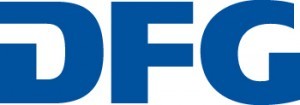Mechanisms and Process Model of Ultra-Refining of Metals by Crystallization via a rotating cooled cylinder
The project aims to explore an alternative method for the synthesis of pure metals. The core element is fractional crystallization, which is to be conducted through an internally cooled rotating crystallizer (in short named “cooled finger”), on which the ultra-pure metal from a contaminated melt grows. This method has in the case of success the potential to replace the current zone melting process. However, the understanding of an effective application of this method, particularly the process controlling parameters as well as a description of the mechanisms in the process, is currently lacking.
By interplay of thermophysical computations and solidification simulation on a macroscopic process and microscopic microstructure scale, the demixing processes at the progressive phase boundary are to be quantitatively described and correlated with process parameters. Extensive DoE-supported experimental investigations to verify and validate numerical predictions are performed on aluminum. Aluminum has been chosen here as the model metal due to the existance of the required thermodynamic and physical data for the simulation that allowing a quantitative study of the fundamental principles and dominant process parameters for the cold finger method. Aluminum is cost-effective in various purities, which means a significant reduction in research costs.
The project results are aimed at process windows for efficient cleaning and the associated parameters and process models for controlling the solidification front dynamics. The cooperation of three working groups with different research interests aims to provide a quantitative understanding of the potential of this — so far — unexplored crystallization process. The physically-based simulation model will facilitate simplified transfer to other alloying systems.

The project is funded by the Deutsche Forschungsgemeinschaft (DFG) under the reference number PF 394/28–1.
